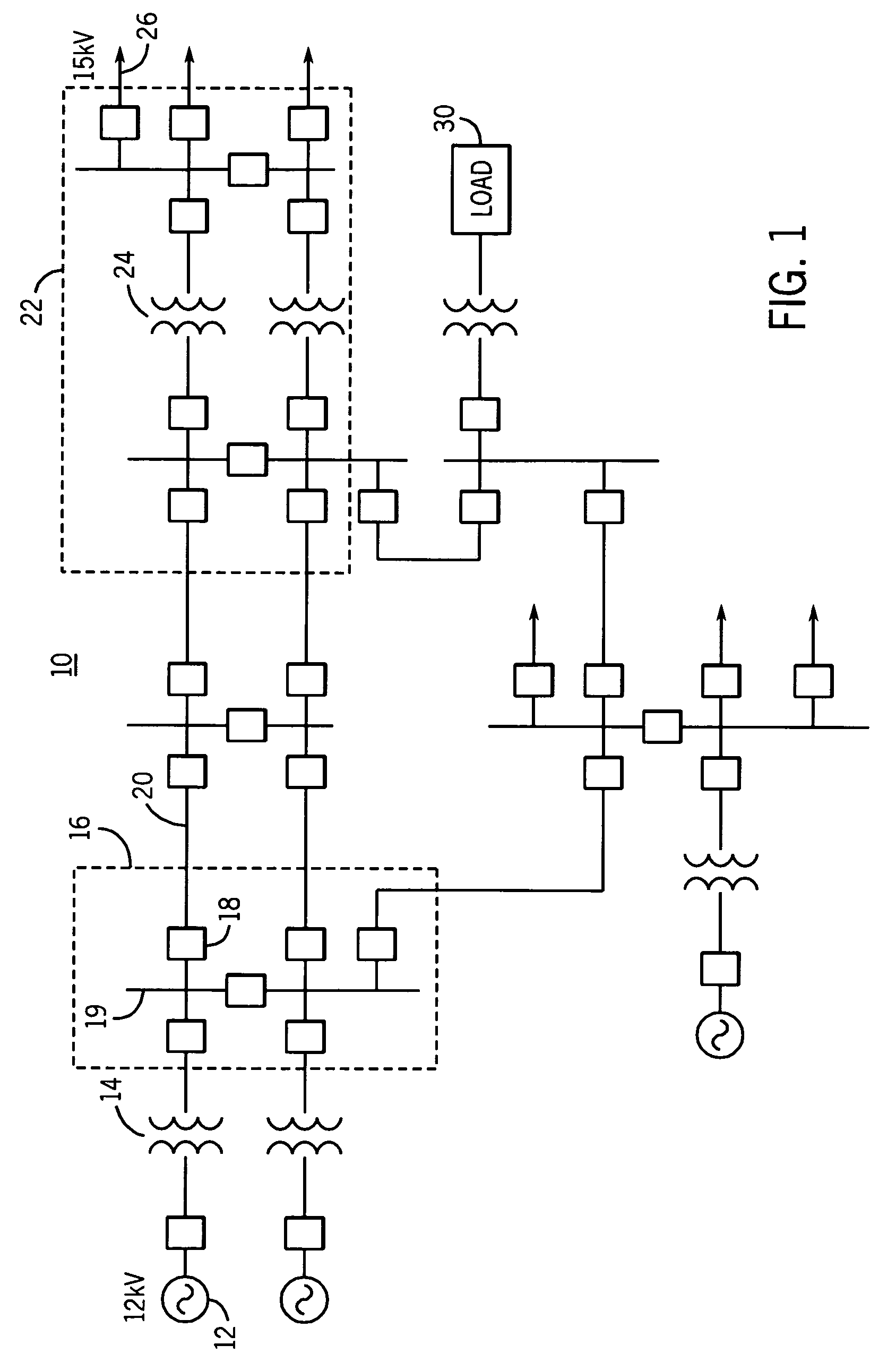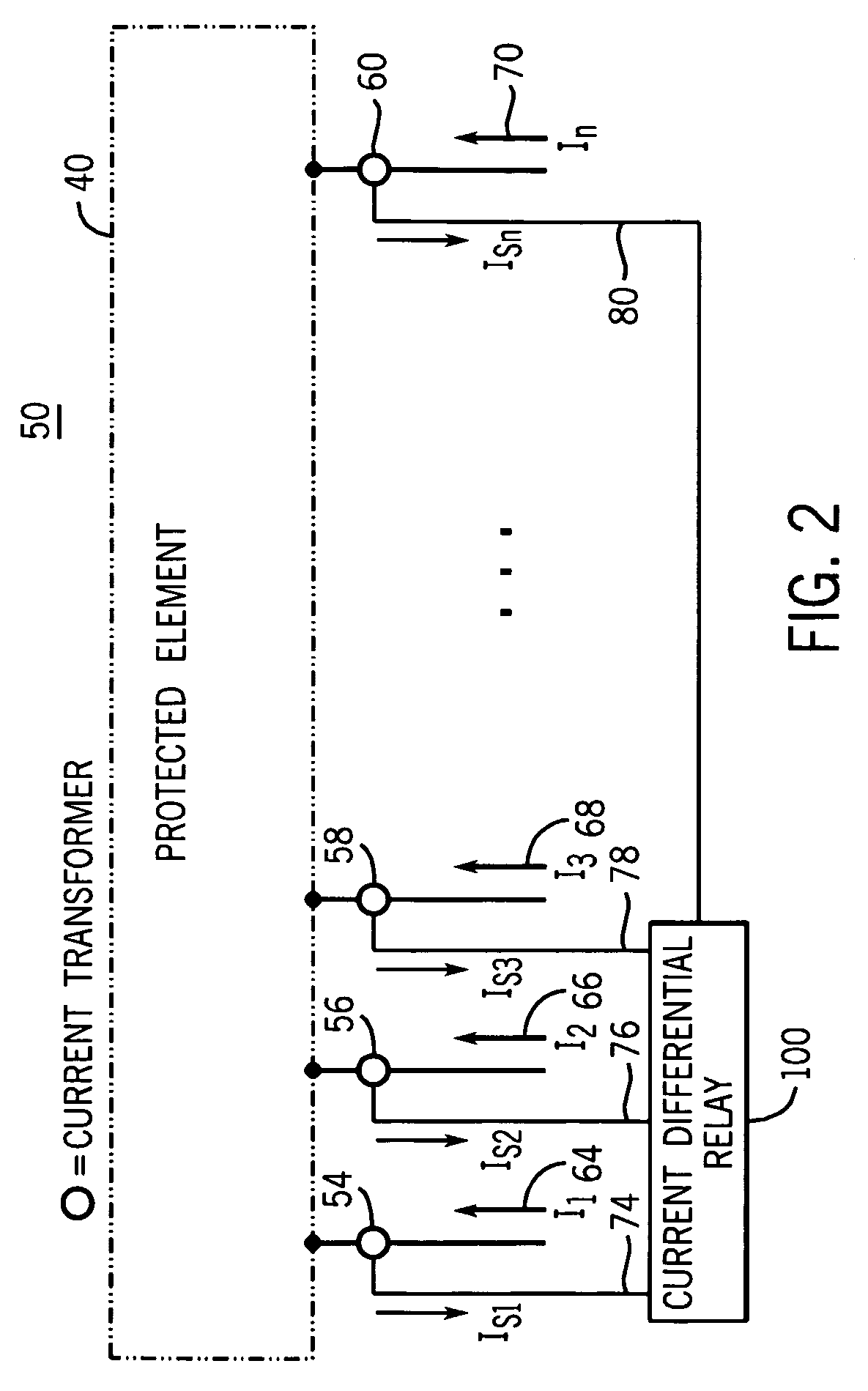Apparatus and method for detecting the loss of a current transformer connection coupling a current differential relay to an element of a power system
a technology of current differential relay and current transformer, which is applied in the direction of electric digital data processing, measurement devices, instruments, etc., can solve the problems of faulted protected elements being isolated from the remainder of the power system, problems such as the operation and the inability of current differential relays to correctly “perceive” short circuits
- Summary
- Abstract
- Description
- Claims
- Application Information
AI Technical Summary
Benefits of technology
Problems solved by technology
Method used
Image
Examples
Embodiment Construction
[0027]Implementation of the system and method for detecting the loss of a current transformer connection disclosed herein prevents a current differential relay from mis-operating when a connection between a CT and the current differential relay is open or short circuited. Further, the embodiments of the system and method disclosed herein are applicable to current differential relays configured to protected a wide range of power system elements such as electrical generators, electrical motors, power transformers, power transmission lines, buses and capacitors, to name a few.
[0028]FIG. 1 is a schematic diagram of a power system 10 that may be utilized in a typical metropolitan area. As illustrated in FIG. 1, the power system 10 includes, among other things, a generator 12 configured to generate three-phase sinusoidal waveforms at, for example, 12 kV, a step-up transformer 14 configured to increase the 12kV sinusoidal waveforms to a higher voltage such as 345 kV, and a first substation...
PUM
 Login to View More
Login to View More Abstract
Description
Claims
Application Information
 Login to View More
Login to View More - R&D
- Intellectual Property
- Life Sciences
- Materials
- Tech Scout
- Unparalleled Data Quality
- Higher Quality Content
- 60% Fewer Hallucinations
Browse by: Latest US Patents, China's latest patents, Technical Efficacy Thesaurus, Application Domain, Technology Topic, Popular Technical Reports.
© 2025 PatSnap. All rights reserved.Legal|Privacy policy|Modern Slavery Act Transparency Statement|Sitemap|About US| Contact US: help@patsnap.com



